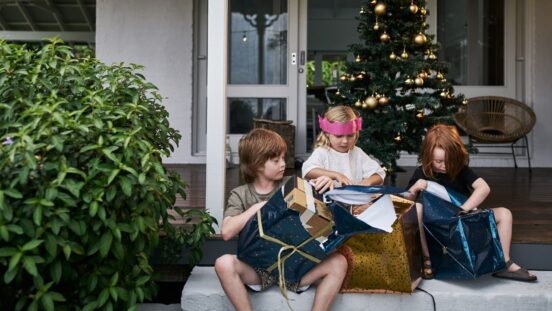‘That’s cricket, kid’: what Bluey can teach us about the spirit of the game

Bluey’s ‘cricket’ episode left Aussie in tears, so why was it so special?
By Glen Thomas, Queensland University of Technology
Anyone with even the most casual interest in cricket will by now be well-versed in the debate over the “spirit of the game”. Alex Carey’s stumping of Johnny Bairstow on the final day of the second Ashes test sparked outrage, condemnation and ugly scenes in the Long Room at Lord’s Cricket Ground.
Plenty of commentators, former players and even prime ministers have had their say on whether Carey’s actions, while certainly within the laws of the game, were in accord with the more nebulous “spirit of cricket”. Precedents have been cited, some going as far back as WG Grace in 1882, who effected a similar dismissal in the very game that gave The Ashes their name.
English supporters have claimed Carey’s actions, while legal, went against the spirit of cricket because Bairstow thought the ball was dead and no longer in play.
Australian supporters counter by pointing out that Bairstow himself has dismissed people in the same way, so what’s the problem?
Cricket is unique in that it has laws that set out the rules of the game, but above this floats the spirit, to which aggrieved players and teams appeal when they feel hard done by.
No one, though, seems to have thought to ask for the thoughts of Australia’s favourite dad, Bandit Heeler. Bandit defines the spirit of cricket as playing hard, not complaining, and encouraging others to love the game.
Cricket lessons from Bluey
The program Bluey presents an iconic suburban Australia that shows children learning about life through games and play.
Season three features an episode called Cricket, in which Bandit explains to his daughter, Bluey, why cricket is much more than just hitting a ball around the grass.
The star of this episode is not Bluey, though. This time, Bluey’s school friend Rusty is the central character (dedicated Bluey viewers will know that Rusty’s dad serves in the Australian army and is often posted overseas on deployment).
In this episode, when it’s Rusty’s turn to bat, Bluey tells her dad they will never get Rusty out. Rusty loves cricket: Bluey creator Joe Brumm has said that Rusty is based on Steve Smith, former Australian captain. Smith has had his own problems with the laws of cricket, such as the “Sandpapergate” incident, in which Smith admitted to a ball-tampering plan and was suspended from the game for a year.

Rusty plays all the time, and when he isn’t playing, he’s practising or even sleeping with his bat next to him.
Bandit explains through flashbacks how Rusty learned to place his cut shot to avoid breaking a window, or how to deal with bad wickets that favour the bowler, or how to handle Tiny, a bigger kid who bowls at express pace.
The scenes with Tiny are the most telling ones. Rusty’s brother tells him that no one is going to go easy on him because he’s younger and smaller than the other kids. Rusty duly gets hit hard, and in the next scene can’t walk properly.
Advice on how to deal with Tiny comes from Rusty’s absent dad, who says Rusty will face harder things than a cricket ball as he grows up. The choices are that Rusty can back away and get out, or step up to the challenge. All he needs to do is keep his eye on the ball and look after his little sister.
That last element is the key to the episode. Rusty is initially shown as refusing to hit a catch to his little sister, but at the end of the episode is caught out by doing just that, even though Bandit tells us Rusty could have hit the ball into the middle of next week if he’d wanted to.
But when Rusty hits the catch, Bandit tells Bluey, “that’s what cricket’s about, kid”.
Rusty did not go easy on his sister earlier, but was generous when his job was done and the game was over. Hitting her a catch also helped inspire a love of the game in her and pride in her performance.

The spirit of the game
Bandit’s statement here is in some ways as nebulous as the back-and-forth arguments about the spirit of the game have been recently.
Australians have maintained that anything within the laws is fair game. English supporters were incensed because Bairstow was oblivious to what was happening and did not seek any advantage from his stroll down the wicket.
Bandit’s story gives us some clues and examples of what the spirit of cricket might mean. Rusty faces a bigger and scarier opponent and learns not to back away or expect special treatment. When the wicket is uneven or difficult, he learns to adapt to the conditions. Obsessive practice means his mother is not chasing after him with a slipper in hand to dole out a hiding. From this, Rusty learns the game, like life, is tough and played hard.
But there are moments to be generous when the game is not in the balance and there are times to show mercy to smaller or weaker opposition, such as Rusty’s sister.
Above all, cricket is about adapting, not backing away and being prepared to learn. But the real heart of the game is not in the player’s ability, but in their will – to be inclusive, encourage other players to love the game, and give someone else a turn when the job is done.
That might be the lesson for Bairstow. Yes, getting out in what a former England captain called a “dozy” way is not great. (As someone who was dismissed in the Under 14s’ in the same way 30 years ago, the memory still smarts.)
But as Bandit says, “that’s cricket”. When the job is done and you have nothing left to prove, then sure, hit a catch to your little sister.
Until then, though, keep your eye on the ball, mate.
Glen Thomas, Senior Lecturer in Professional Communication, Queensland University of Technology
This article is republished from The Conversation under a Creative Commons license. Read the original article.




